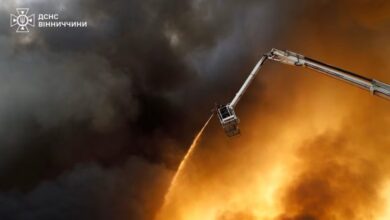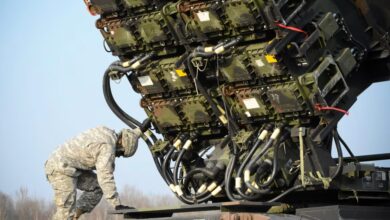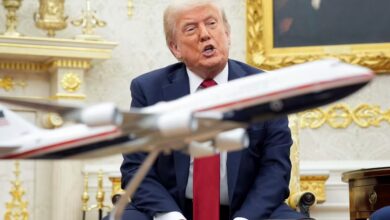
The horizon disappears for a moment as the nose of the helicopter rears. There’s a faint thump as rockets trailing brown smoke arc ahead. The aircraft banks as if flicked on its side by an outside force.
Diving back towards to the ground it spurts flares from its tail to distract heat-seeking missiles.
Somewhere in the battle for the eastern Ukrainian town of Bakhmut, Russian soldiers are being torn apart, and burned, as the ground itself erupts when the rockets find their target. There’s no time to reflect – the effect of the rockets will get passed back to the pilots later. Their task now is to stay alive.
Ukraine’s losses are a national secret. But pilots and air crew in the Sikorsky Brigade have all lost close friends to Russian SAMs (Surface to Air Missiles). Often shoulder launched, the man-portable missiles can send a helicopter into a ball of flame in seconds.
They’re hunted. Whether airborne or not. Ukraine’s air force and army aviators along with their planes and helicopters, are priority prey for Russia’s missiles. They’re likely top of the Kremlin’s list.
CNN spent time embedded with the Sikorsky Brigade in eastern Ukraine operating from a secret base. It has a handful of helicopters and pilots there, conducting combat missions against Russian forces.
Given the gigantic advantage that Russia enjoys over Ukraine in terms of aircraft and pilots it’s staggering that Ukraine can still threaten Russian forces. Indeed it’s baffling that almost one year into the conflict Ukraine has an air force and helicopter fleet at all, given the effort to destroy them.
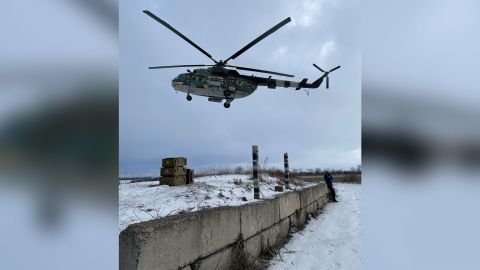

“We’re always surprised that we’re here. But, well, we are and we’re never going to stop,” says the deputy commander of the Sikorsky Brigade – his name and location are military secrets.
Ukraine’s helicopter pilots have to fly so low that being onboard one is like riding a pebble as it skims and skips across water.
Serhiy and Hennady are both middle-aged pilots with more than two decades of flying behind them. They spent much of the early 2000s flying for the United Nations on peacekeeping missions in Liberia, Sierra Leone, South Sudan and the Democratic Republic of the Congo.
The experience, they say, had been invaluable. It kept their hours up and gave them experience of flying low and in difficult circumstances – like the ongoing civil war in the DRC.
Still this week Serhiy, who commands a flight of two Mi-8s each flying about three combat sorties a day, tells CNN he clipped a tree. Three of his five rotor blades were damaged and caused a forced landing – a drop of about 20 feet. The venerable Mi-8s – all made before the collapse of the Soviet Union – are over three decades old, their flanks are streaked black with exhaust and oil.
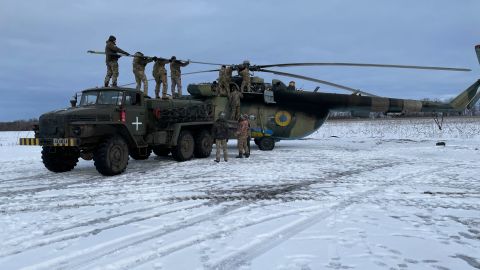
Dangerously close to the front line, he could not stay on the ground so, after a quick inspection, took off on his damaged blades. He flew to a rear location where engineers could swap the damaged equipment with three others cannibalized from a different helicopter.
Ukraine’s military is making do. It gets more equipment by capturing it from Russian troops than it gets donated by allies.
President Volodymyr Zelensky has begged NATO and other allies for, among other things, jets and other aircraft. The response so far has been close to nil.
The United Kingdom has offered to boost Ukraine’s helicopter fleet with a handful of ancient Sea King aircraft that have been decommissioned from the military. Portugal, meanwhile, has given six Russian-made Ка-32А11VS – none of which are even airworthy and which, its defense minister said, Ukraine would have to fix itself.
‘What else can we do?’
For Serhiy, the Ukrainian pilot, the equipment can’t arrive soon enough. Speaking to CNN at the brigade’s operation base, he says, “Of course we need newer helicopters because we have aircraft from the Soviet era. We are squeezing everything possible and impossible out of them.
“It would be good if we were given some new kinds of helicopters, including the Apaches. We’d learn them very quickly because we have the motivation.”
His team has set up temporary locations near the front line where they hide fuel and ammunition. Support crews tuck themselves out of sight. Perimeter security exists but it’s invisible.
“They’re old aircraft sure. But they’re better than nothing – what else can we do?” asks Hennady.
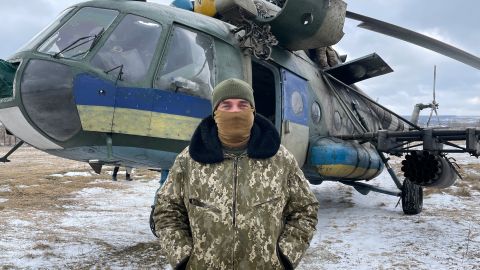
Ukrainian pilots have lost many many friends in a war of attrition. Their main weapon is, arguably, better motivation than their Russian enemies. They covet Western aircraft as if their lives depended on them – which they would.
Yuri is a younger flier who is paired with a more experienced co-pilot, but nevertheless has a tally of more than 100 combat missions this year alone. “All we have are skillful pilots who are flying old helicopters,” he says. “If we had new machines, we would be able to fulfill tasks much better. We would support the infantry better during combat, and of course there would be fewer casualties. Because the system that protects the helicopter is much better in Western models of helicopters.”
The Mi-8s in this flight were conceived as transport helicopters in the 1960s, but are now mounted with rockets. Unlike modern, or even Soviet-era attack helicopters, they’ve got no armor to protect the pilots.
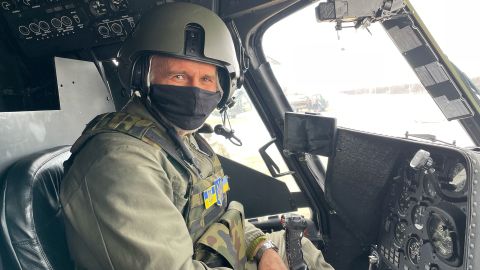
Nor do they have sophisticated targeting systems. The effective use of their rockets is a combination of hope and experience.
After a sortie this week against Russian troops massing for an attack near Bakhmut, Serhiy said: “We hit the target – I am satisfied.”
But he had to wait 24 hours to learn this from Ukrainian drone operators who’d called him in to give him the news. Because by the time his rockets hit the ground, he was racing away below tree height.
“The Russians can find and hit us from more than 30km away. We have radar that can track them, so sometimes we know they’re shooting at us and can land, or hide behind hills,” he explains.
“Electronic counter measures” to distract Russia’s modern SAMs and air to air missiles have been fitted – but those systems are ancient too.
“We don’t know if they work at all,” says Hennady, “but if they work at 2%, that’s better than nothing.”
“Better than nothing” will have to do for now for pilots who see themselves as defending Europe against Russian invaders.
The pain of bereavement though remains raw. “In December, a very close friend of mine died,” says Serhiy. “A lot of people I knew, friends have already died, unfortunately. It is very painful, I am very upset… I cannot move on…”
CNN’s Sarah Dean and William Bonnett contributed to this report.


